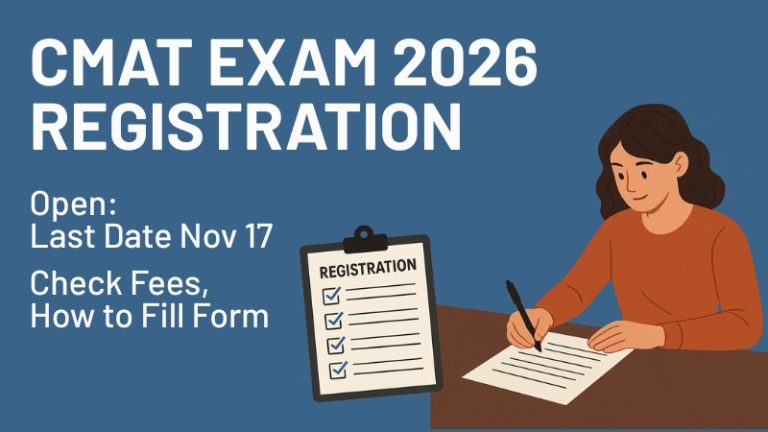Master the CAT VARC section with proven strategies for Reading Comprehension and Verbal Ability. Learn time management, daily practice routines, and smart tips to improve accuracy, speed, and consistency—helping you score higher in CAT.
Mastering VARC in CAT: Strategies, Practice, and Precision

Among the three sections of the CAT exam, Verbal Ability and Reading Comprehension (VARC) is often seen as unpredictable. Unlike Quantitative Aptitude (which follows defined formulas) or Data Interpretation & Logical Reasoning (which relies on logical patterns), VARC tests comprehension, reasoning, and language application skills. For many aspirants, it is either their strongest section or the biggest roadblock to a high percentile.
This article provides an in-depth strategy to master Verbal Ability and Reading Comprehension (VARC), with practical tips, study methods, and time management techniques.
Understanding the VARC Section
Structure of VARC
- Reading Comprehension (RC): 16 questions (typically 4 passages × 4 questions each).
- Verbal Ability (VA): 8 questions (Parajumbles, Odd One Out, Para Summary).
Why VARC is Critical
- It forms one-third of the exam score.
- Strong performance here can balance weaker performance in QA or DILR.
- It requires conceptual clarity and regular practice rather than memorization.
Strategy for Reading Comprehension (RC)
Reading Comprehension is the backbone of Verbal Ability and Reading Comprehension (VARC). Success here requires both speed and accuracy.
Common Types of Passages:
- Abstract topics (philosophy, psychology, sociology)
- Business & economics
- Science & technology
- Current affairs or history
Approach to RC Passages
- Skim the questions first: This primes the mind for what to look for.
- Read actively: Focus on the main idea, the author’s tone, and the flow of arguments.
- Avoid over-reading: Don’t get stuck on one confusing sentence; grasp the overall theme.
- Practice inference-based questions: These are the trickiest and often make the difference.
Apply Now for MBA^/PGDM
RC Tips
- Develop daily reading habits—editorials from The Hindu, The Economist, Aeon Essays.
- Summarize passages in your own words to improve retention.
- Time yourself: target 8–9 minutes per passage.
Strategy for Verbal Ability (VA)
The VA section is shorter but tricky. It tests structural understanding of language.
1. Parajumbles
- Rearranging jumbled sentences into a coherent paragraph.
- Tip: Look for connectors—pronouns, chronology, cause-effect clues.
2. Odd One Out
- Identify the sentence that does not fit with the others.
- Tip: Spot the sentence with a different theme or context.
3. Para Summary
- A short passage is given; the best summary must be selected.
- Tip: Select the option that accurately captures the main idea without unnecessary assumptions.
Daily Study Routine for VARC
- 30 minutes: Reading editorials/essays.
- 30 minutes: Practice RC passages (2–3 per day).
- 20 minutes: VA practice (parajumbles, summary, odd-one-out).
- 10 minutes: Review mistakes and note learnings.
Group Discussion Topics
Common Mistakes in VARC
- Over-reliance on options: Many aspirants read the options first and get biased.
- Guesswork in parajumbles: A random arrangement drastically reduces accuracy.
- Lack of consistency: Sporadic reading practice doesn’t build long-term skill.
- Poor time allocation: Spending too long on one RC passage leaves the VA unanswered.
Resources for VARC Preparation
- Books:
- How to Prepare for Verbal Ability and Reading Comprehension for CAT by Arun Sharma & Meenakshi Upadhyay.
- Word Power Made Easy by Norman Lewis.
- How to Prepare for Verbal Ability and Reading Comprehension for CAT by Arun Sharma & Meenakshi Upadhyay.
- Websites & Apps:
- Editorials from The Guardian, New York Times, and LiveMint.
- Reading apps like Pocket, Medium, and Quora.
- Editorials from The Guardian, New York Times, and LiveMint.
- Mock Series: AIMCAT, SIMCAT, CL Test Series (for RC variety).
Time Management in VARC
- Total time: 40 minutes.
- Suggested split:
- RC: ~28–30 minutes (4 passages).
- VA: ~10–12 minutes.
- RC: ~28–30 minutes (4 passages).
Strategy differs depending on strengths:
- Strong in RC → Prioritize 3 passages + VA.
- Strong in VA → Do all VA first, then 2–3 RCs.
Psychological Edge in VARC
- Avoid frustration with abstract passages; they test reasoning, not subject knowledge.
- Stay calm if stuck—skip and return later.
- Build confidence by practicing easier RCs initially before moving to abstract ones.
MBA Entrance Exams
Frequently Asked Questions (FAQ)
Q1. I read daily, but my accuracy in RC is poor. What should I do?
Reading alone is not enough. Practice CAT-level passages with questions. Analyze why wrong answers were chosen.
Q2. Should I memorize vocabulary for the CAT Exam?
Not necessary. Focus more on comprehension and context-based understanding than memorization.
Q3. How can I improve parajumbles?
Practice daily. Look for logical connectors like chronology, cause-and-effect, pronouns, and linking words.
Q4. Is it better to attempt RC first or VA first?
Depends on comfort. Most aspirants prefer RC first, but if VA is stronger, tackle it early.
Q5. How many RC passages should I practice before the CAT?
At least 300+ passages across different genres over 6 months.














